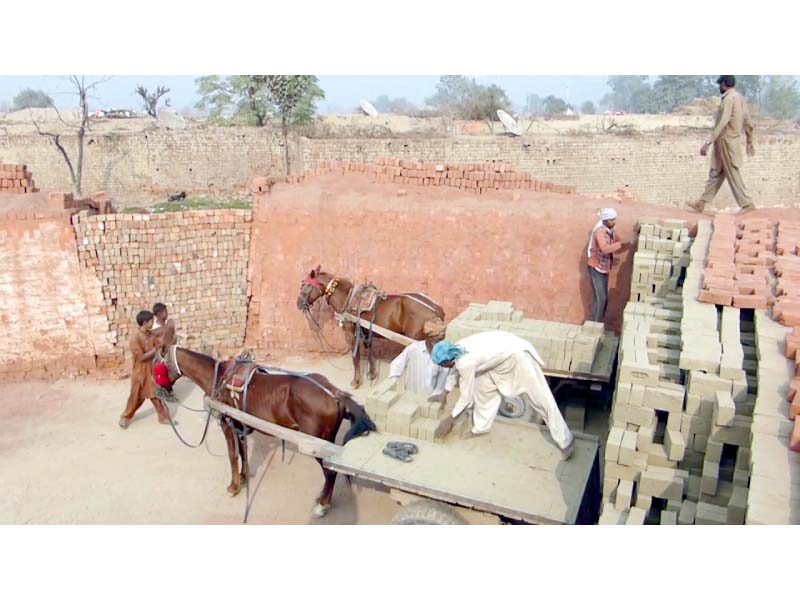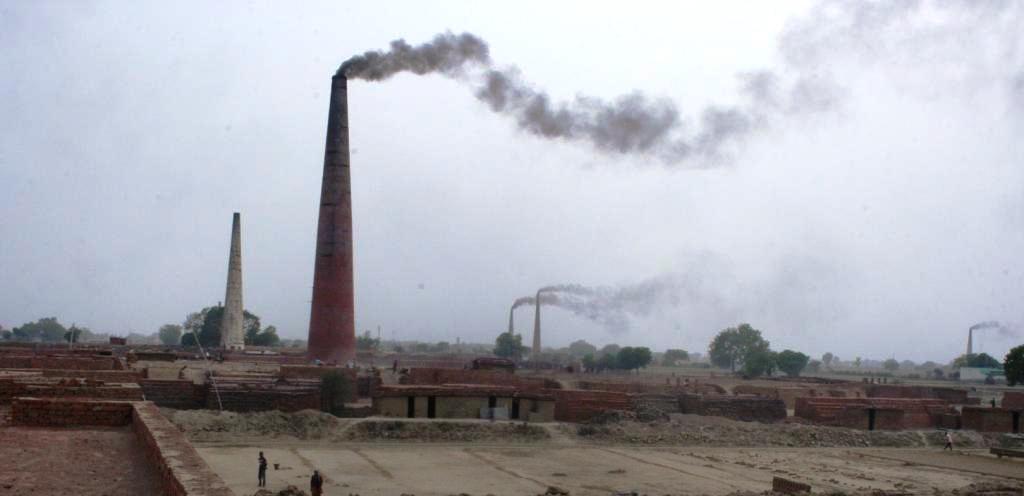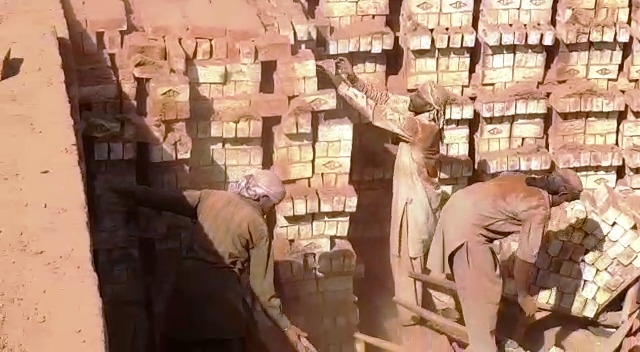
LAHORE: In a bid to control the environmental pollution caused by brick kilns because of the burning of coal, the government of Punjab has long been pushing the strategy to promote Zig-Zag Firing Brick Kiln (ZFBK) technology. However, the government’s goal to completely replace the old technology is still a far-fetched dream as, so far, only 500 traditional style kilns in the province could adopt the zig-zag technology.
According to the All Pakistan Brick Kiln Association (APBKA), at least three to four years are required for more than 11,000 brick kilns in Punjab to abandon the old, Fixed Chimney Bull’s Trench Kiln (FCBTK) method and transition to the zig-zag technology.
 PHOTO: EXPRESS
PHOTO: EXPRESSAccording to the association, negligence on part of the government and shortage of manpower are the major reasons why it has become so difficult to adopt the zig-zag technology.
Rana Abdul Jabbar, who runs a traditional-style kiln for the past several years near Phul Nagar said that he has recently shifted his kiln to the zig-zag technology.
“The transition to zig-zag technology cost me a total expenditure of Rs1.5 to Rs2 million. Since I already had an electricity connection and a kiln, I only had to purchase a fan and blower,” he said.
The smoke emitted by the kiln using the zig-zag technology is white and lacks carbon while the quality and production of the bricks are also considerably improved.
“Earlier, we would produce 20,000 to 25,000 bricks daily through the FCBTK method, but after using the zig-zag technology, the production has increased to 45,000 to 50,000 bricks per day,” Abdul Jabbar informed The Express Tribune.
He said that the production of first-quality bricks has also increased from 60 % to 90%. The new technology has also reduced the expenditure of fuel and coal by 30%.
Secretary-General APBKA Mehr Abdul Haq said that kiln owners are generally willing to adopt the zig-zag technology, however, the transition cannot happen overnight.
He said that Pakistan is the third biggest brick-manufacturing country in South Asia and there are a total of 19,000 brick kilns in Pakistan, out of which 11,000 are set up in Punjab. It takes nearly two to three months to shift a traditional-style kiln to the zig-zag technology.
 PHOTO: EXPRESS
PHOTO: EXPRESS“Shifting the traditional-style brick kilns to the zig-zag technology is not difficult,” Abdul Haq said. “We have examined the technology in Nepal which is quite similar to our traditional method. It requires nearly Rs10 million to adopt the new technology. Not every kiln owner has the means to make the transition.”
He added that the association has recommended the provincial government to offer subsidy and loans, based on easy instalments, to kiln owners and also control the coal mafia.
Rana Sajjad, who is associated with the brick kiln business for the past several years, said that the adoption of the zig-zag technology will help increase brick production in lesser time.
“The new technology will help produce more bricks in lesser time without reducing the number of labourers involved in the production of raw bricks,” he said. “In fact, more labourers will be needed.”
Rana Sajjad said that the shortage of labourers to prepare bricks is also one of the reasons for the non-adoption of zig-zag technology.
In the zig-zag process, the process of igniting coal inside the kiln is expedited and a blower is used for the purpose. Instead of being put in a straight line, the raw bricks are kept in the kiln in a zig-zag manner which emits smoke in the same manner. The carbon content of the smoke remains inside the kiln while the white smoke is pushed out of the kiln through the strong wind pressure from the blower which greatly reduces environmental pollution.
 PHOTO: EXPRESS
PHOTO: EXPRESSWhile APBKA owners have wholeheartedly accepted the new technology, they have rejected the government’s recommendation to shut down the all traditional kilns in October.
According to Mehr Abdul Haq, the sudden closure of the kilns will not only affect one industry but several fields.
“Several brick kilns can be shifted to zig-zag technology during the smog season, given that the government provides subsidy and technical assistance to us,” he said.
On the other hand, some kiln owners have several reservations over the new technology. A kiln owner shared that his blower, which cost him Rs500,000 to 600,000, runs out of order every two months, while several bricks remain raw during the process.
According to experts, this happens due to the use of wrong techniques. They opine that the installation of the blower by a technical expert and the arrangement of the bricks accordingly will deter the loss.
Published in The Express Tribune, October 8th, 2019.














































COMMENTS
Comments are moderated and generally will be posted if they are on-topic and not abusive.
For more information, please see our Comments FAQ